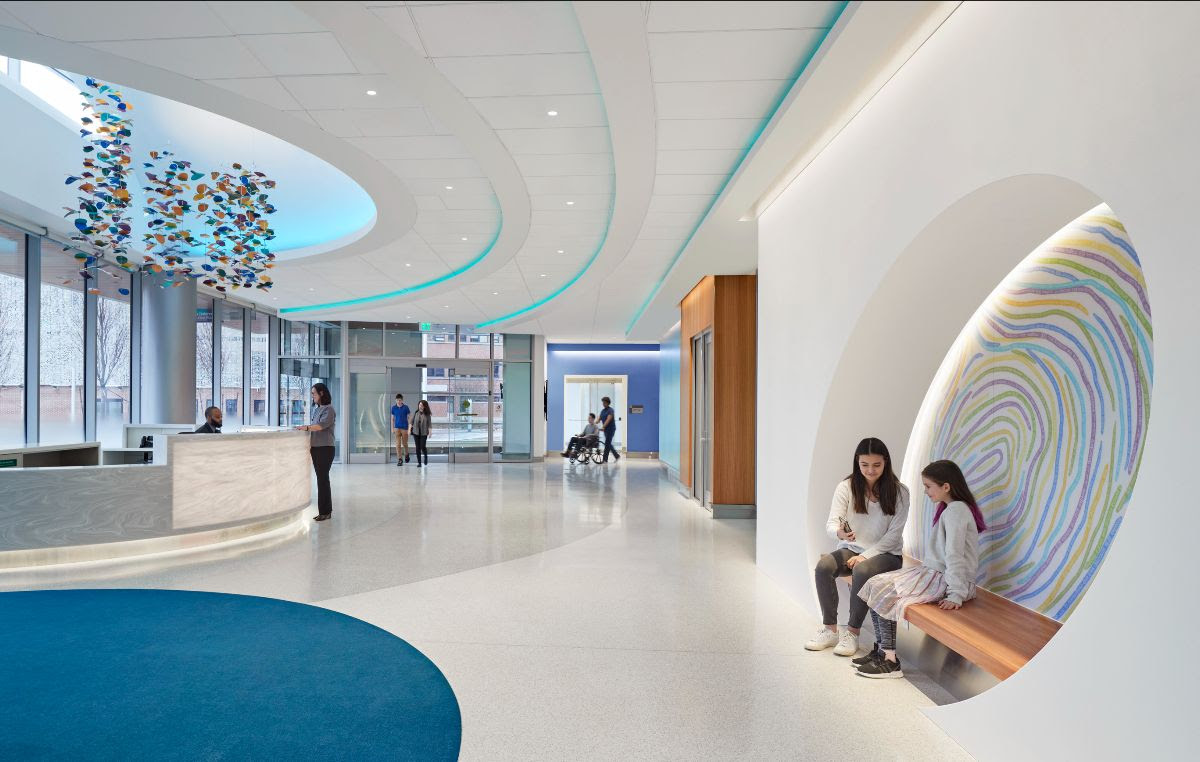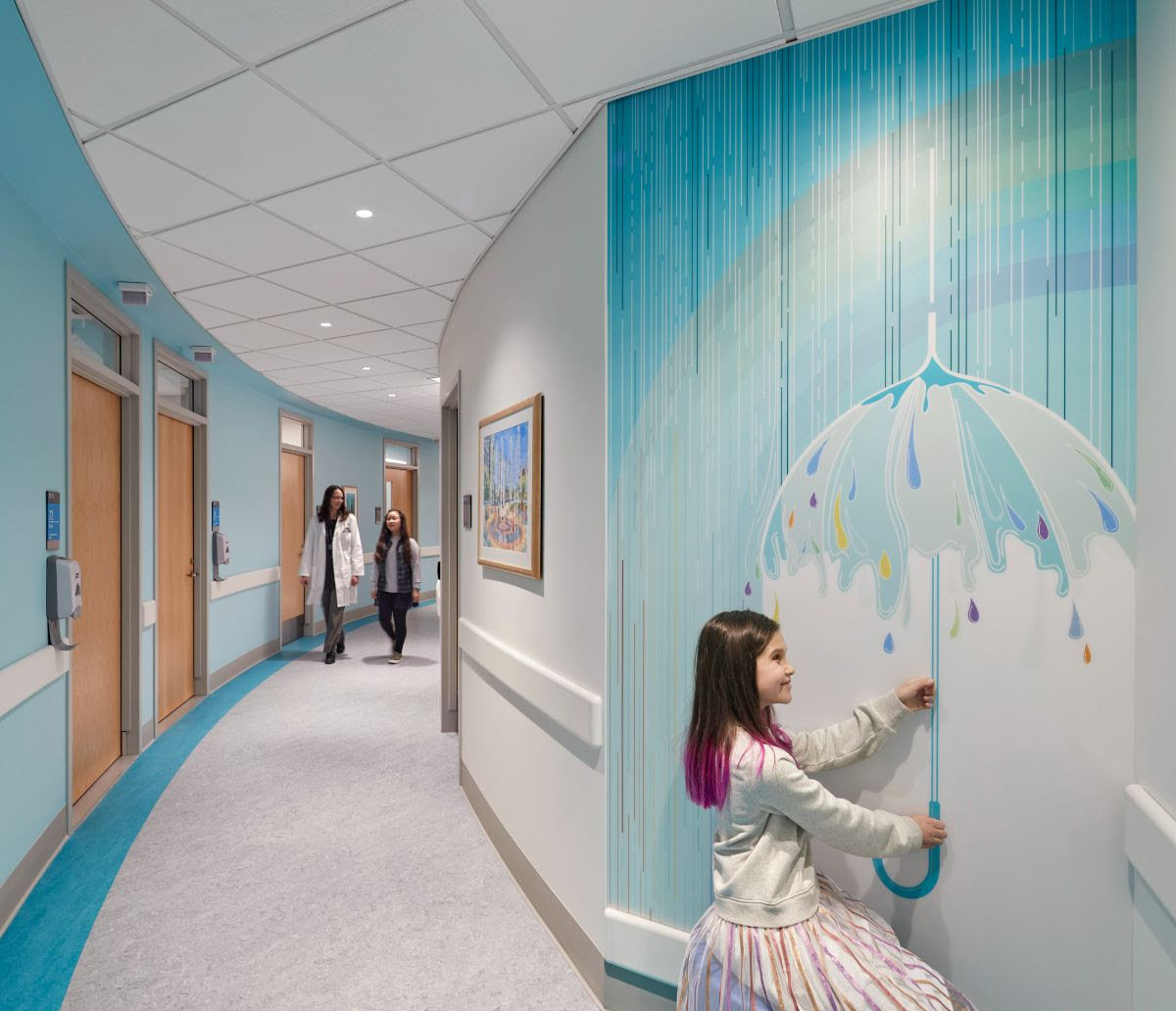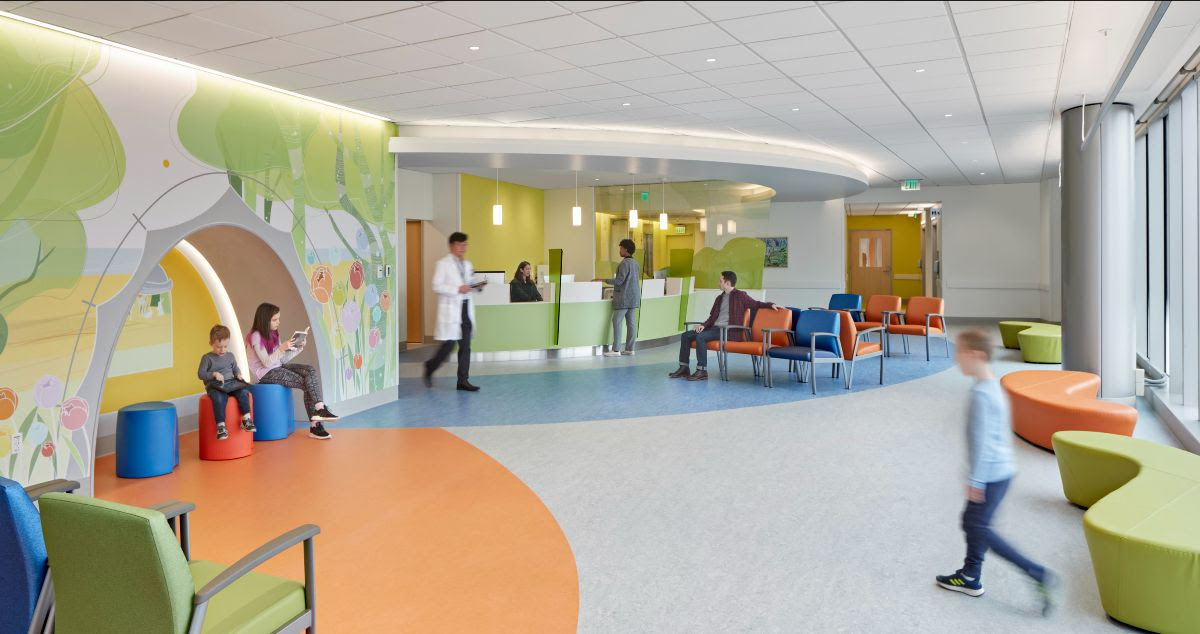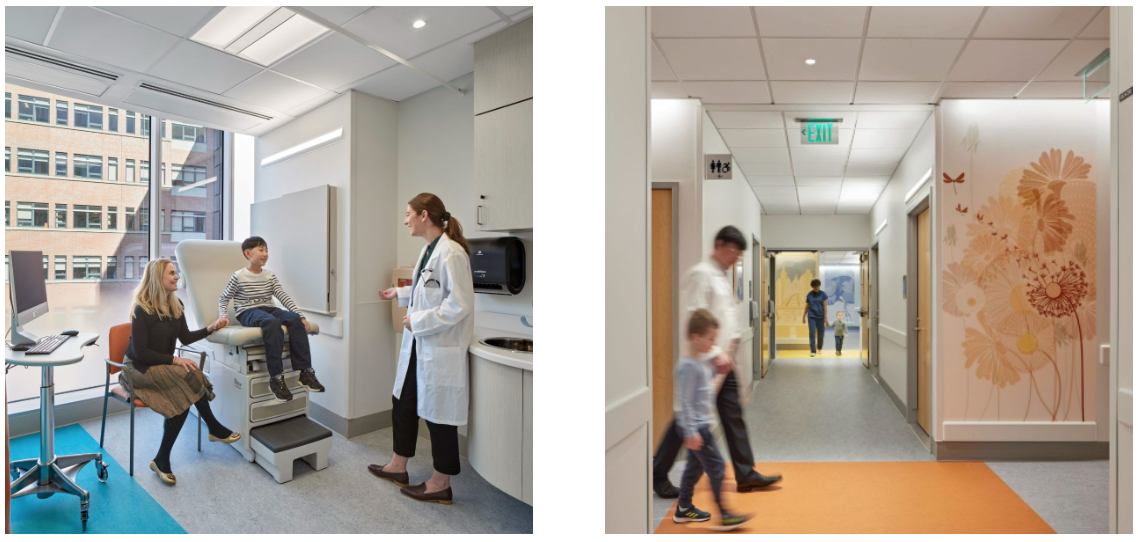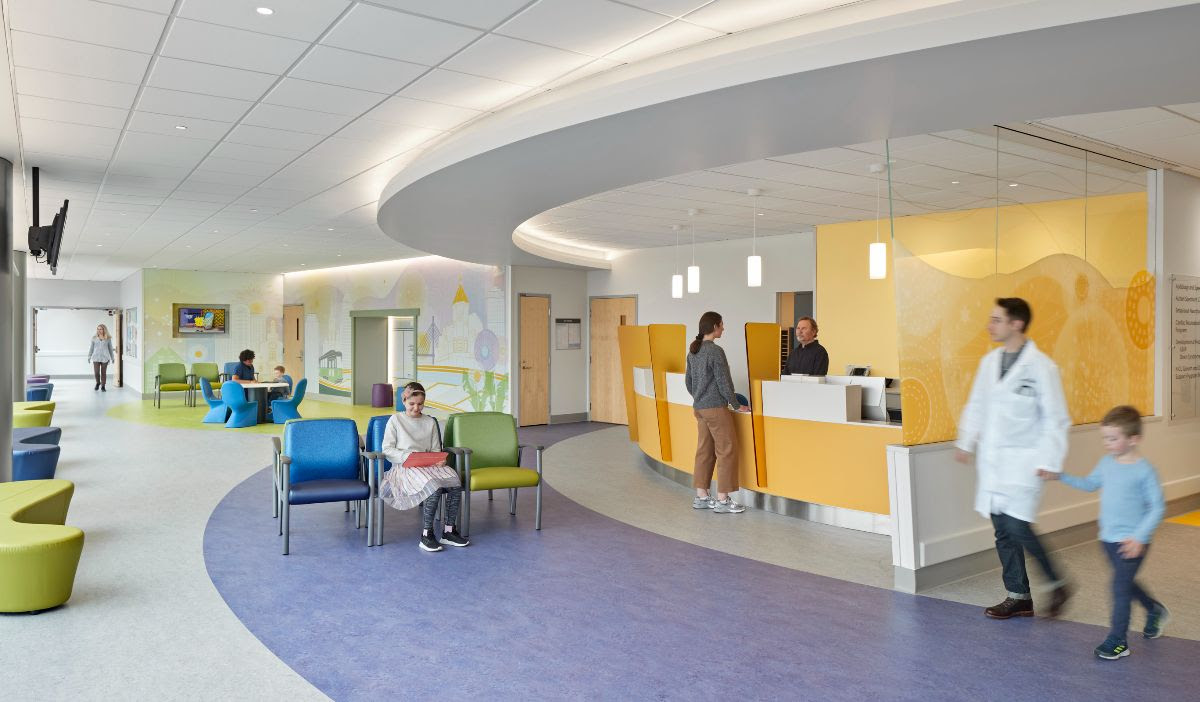|
What if a medical visit could be uplifting rather than stressful? What if it could provide families with moments of fun, whimsy—even Instagrammable memories—over anxiety? This is a question at the center of Boston Children’s Brookline, where patient-centered design was at the forefront of each decision and where a sensitivity to neurodiverse reactions to environments informed design.
This building is home to the newly created Brain, Mind, and Behavior Center, which provides world-class collaborative care and translational research for those with neurodevelopmental or neuropsychiatric conditions. To serve this unique population, the project team choreographed an engaging yet calm, comfortable, and safe experience. The facility’s wayfinding, graphics, and design theme “The Amazing You” celebrates the capacity of our brains to wonder, discover, explore, and imagine, surpassing any limitations of the body. Interactive graphics create low touch, light-hearted, and camera-ready moments throughout the project.
The design responds directly to research about the autism spectrum and cognitive neuroscience. Walls and ceilings were activated to encourage young eyes to stay up and engaged while a network of quiet and safe spaces was carved out for when overstimulation proves challenging. Curves and subtle wayfinding cues were embraced to make corridors intuitive and interesting rather than disorienting. Diagnostic boards were covered to limit the temptation of dangly cords. Floor to ceiling windows were tinted to reduce fear of heights and vetted with the Family Advisory Council to ensure its patterning would not become a point of fixation. The color palette was fine-tuned to provide delight while avoiding over-saturation. Wall graphics become interactive environments rich with accurate detail (can you find all the hidden bugs in the campsite below?) and teachable moments (can you name the stars in each constellation at right?).
Seeking to offer a “one stop shop” for families, early programming helped co-locate formerly distant departments, also opening up new opportunities for collaboration and translational research. The location, a short walk or shuttle from main campus, is immediately served by a public transit stop and a new garage. Both give families and staff a short, safe, one minute trip through a landscaped rain garden to the front door. Throughout the project, access to natural lighting, uplifting environmental graphics, considered artwork, and subtle safety features are consistently applied.
Collaborators- |






